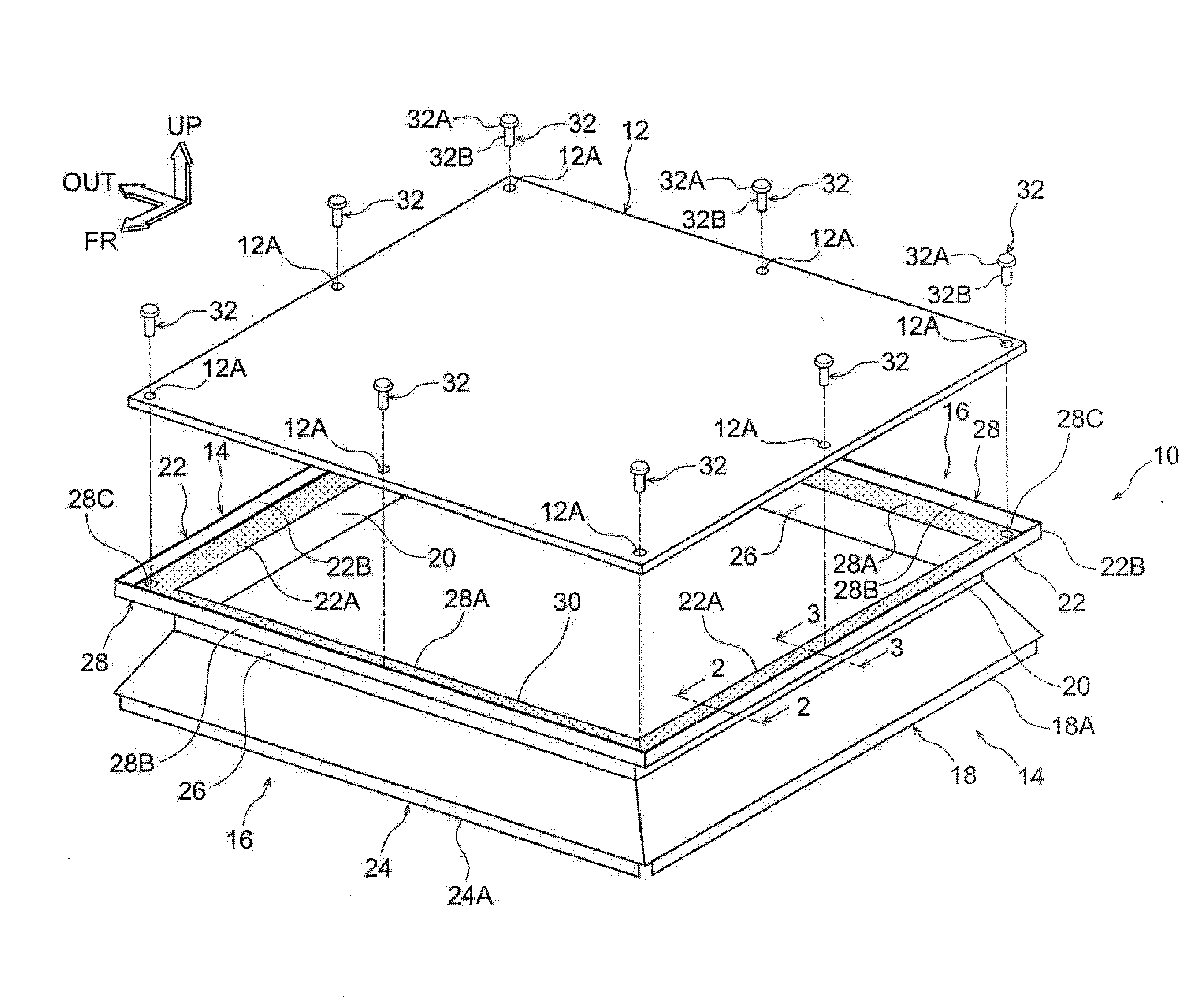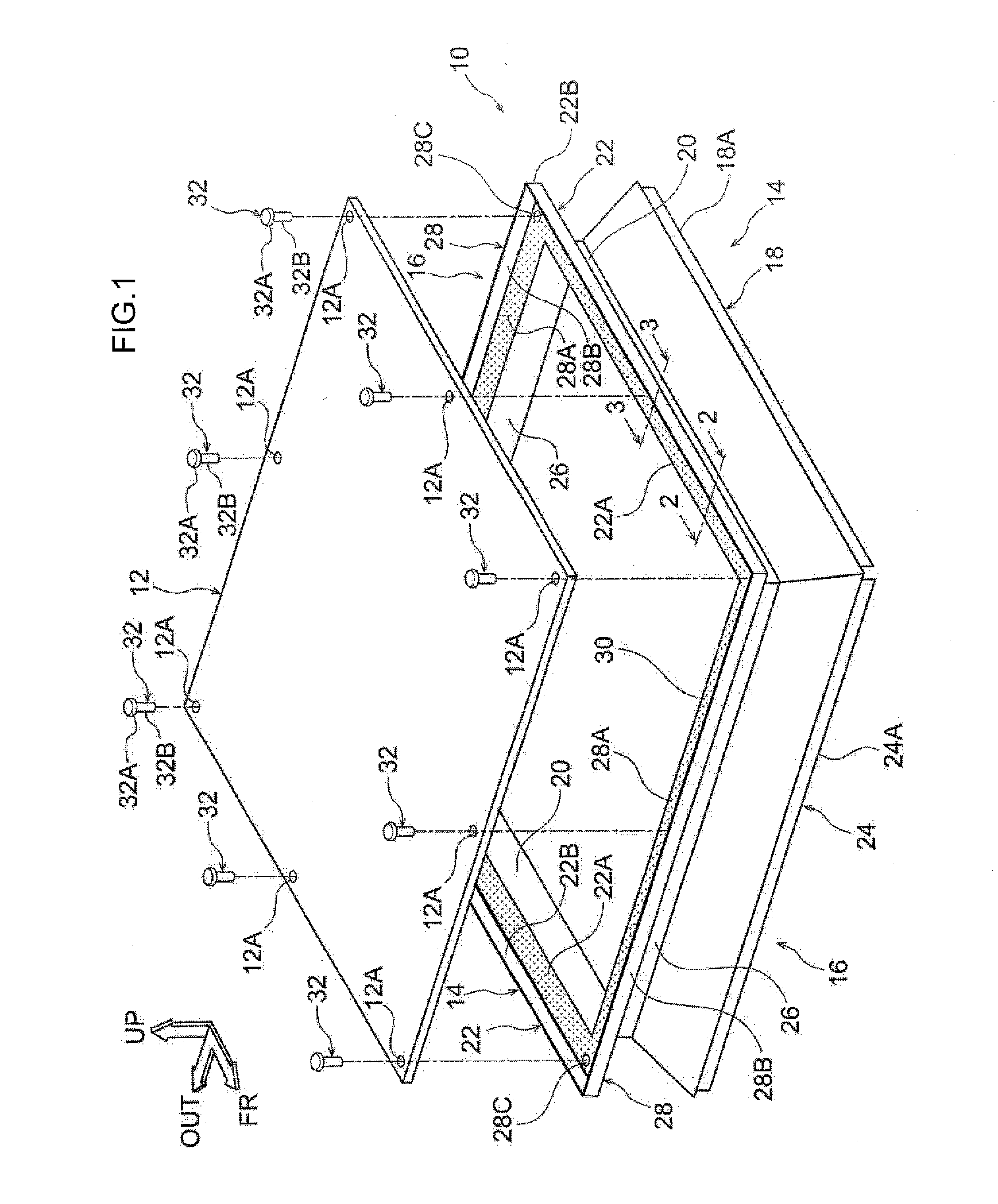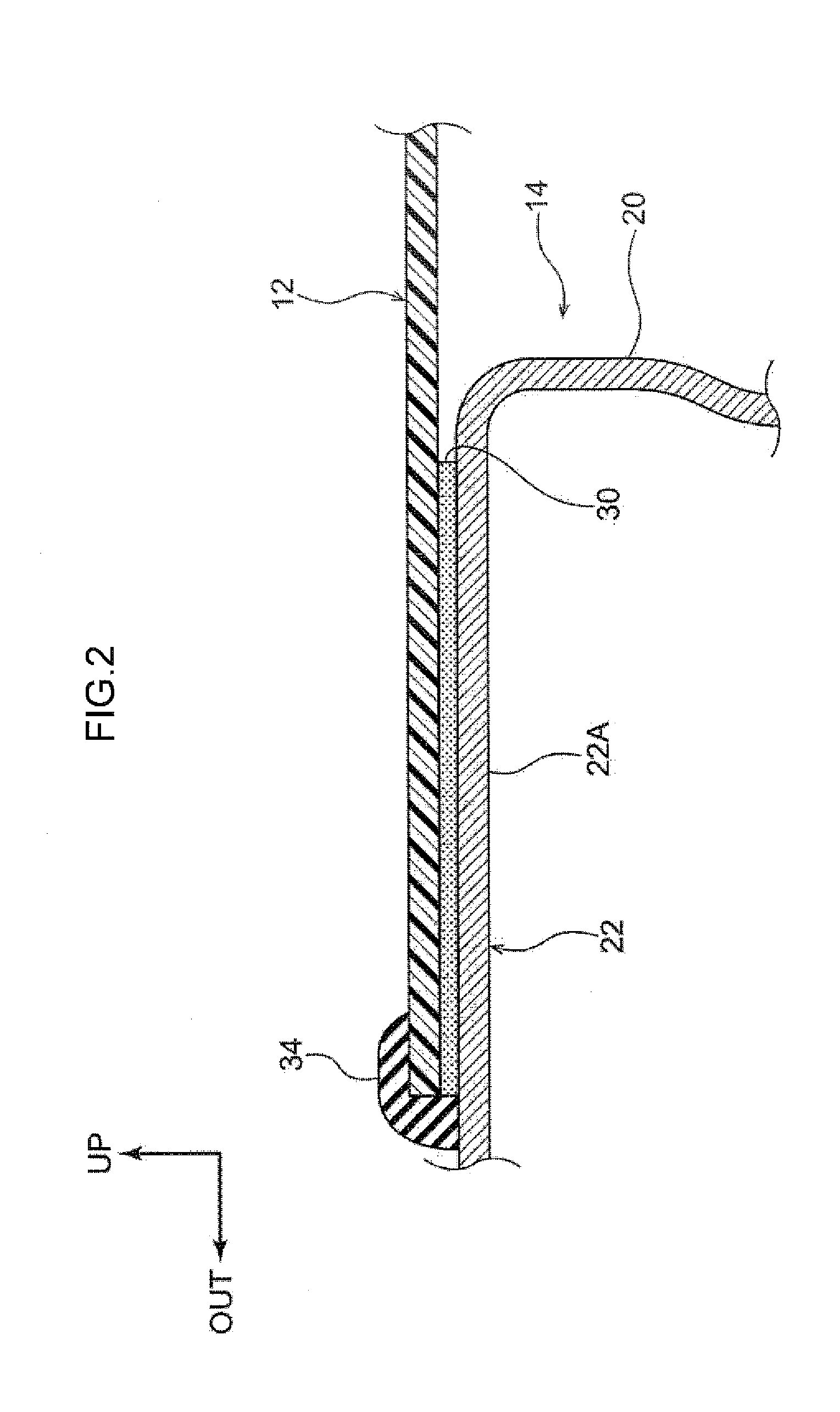Vehicle member joining structure and vehicle member joining method
a technology of vehicle member and joining structure, which is applied in the field of vehicle member joining structure and vehicle member joining method, can solve the problems of large difference between the linear expansion of the steel side member outer panel and the roof panel, the adhesive may peel, and the heating time of the frame member, so as to suppress the thermal strain, improve the joining strength of the metal member and the resin member, and suppress the effect of thermal strain
- Summary
- Abstract
- Description
- Claims
- Application Information
AI Technical Summary
Benefits of technology
Problems solved by technology
Method used
Image
Examples
Embodiment Construction
[0036]An embodiment of a vehicle member joining structure is described hereinafter with reference to the drawings. Note that arrow FR that is shown appropriately in the respective drawings indicates the vehicle front side of a vehicle in which vehicle members are assembled, arrow UP indicates the vehicle upper side, and arrow OUT indicates a vehicle transverse direction outer side. Further, in the following description, when longitudinal, vertical, and left and right directions are used without being specified, they respectively indicate the vehicle longitudinal direction, the vehicle vertical direction, and the left and right directions when facing in the advancing (forward-moving) direction.
[0037](Vehicle Member Joining Structure)
[0038]As shown in FIG. 1, the vehicle members are structured to include a metal frame 10 that serves as a metal member and that is formed in a substantially rectangular frame shape as seen in plan view, and a resin panel 12 that serves as a resin member a...
PUM
| Property | Measurement | Unit |
|---|---|---|
| tensile shear strength | aaaaa | aaaaa |
| structure | aaaaa | aaaaa |
| elastic modulus | aaaaa | aaaaa |
Abstract
Description
Claims
Application Information
 Login to View More
Login to View More - R&D
- Intellectual Property
- Life Sciences
- Materials
- Tech Scout
- Unparalleled Data Quality
- Higher Quality Content
- 60% Fewer Hallucinations
Browse by: Latest US Patents, China's latest patents, Technical Efficacy Thesaurus, Application Domain, Technology Topic, Popular Technical Reports.
© 2025 PatSnap. All rights reserved.Legal|Privacy policy|Modern Slavery Act Transparency Statement|Sitemap|About US| Contact US: help@patsnap.com



